The Horizon-Blue Cloth
The evolution of the French uniform is one of the more fascinating aspects of French army history of the period. While several efforts to modernize French uniforms to appear less conspicuous had been undertaken in the decade preceding the outbreak of war, none failed to really get off the ground. In 1912, progress was made with the development of a new cloth referred to as drap tricolore ("tricolor cloth") and composed of blue, white and red threads. Approval for the new cloth was already won when it was discovered that the manufacturers of the red dye (the synthetic alarizin) used in the process were all German. Production of the cloth went ahead nonetheless with the red thread simply omitted.
Yet when hostilities began in August 1914, only a limited quantity of the tricolor cloth had been produced, falling far short of the amount needed. In the urgency, the French Ministry of War instructs the great industrail cloth manufacturer, Baslan, to simply produce a lighter shaded version of the existing uniform cloth gris de fer bleuté ("iron blue-gray"). To do so, the composition of the threads -- which stood at 10% unbleached white and 90% dark blue (indigo) -- was adjusted by the addition of light blue thread. This was a cost and time saving measure, as it allowed manufacturers to use their existing stocks of threads. The official description called for the cloth (a heathered twill weave) to be composed 35% unbleached white, 15% dark blue (indigo), and 50% light blue.
The cloth itself began production in mid-August 1914 and was officially referred to as bleu clair ("light blue"), per the official decision on 25 November 1914. History has recorded this as bleu horizon ("horizon-blue") following a January 1915 issue of the highly popular periodical L'Illustration, which referred to "a new gray-blue greatcoat, called horizon color." Thus, while horizon-blue is used as a blanket term for the new cloth, it was never an official term. Further, light blue is technically more accurate when used to describe the cloth generally produced prior to spring 1915 (the captions for images below reflect this terminology). The term 'light blue' 'is deceiving though, as in actuality the range of colors varied from an ashen light blue to a medium blue-gray. While the new cloth did not achieve the true neutral tone original intended, due to the nature of the early dyes, the cloth often faded to a light blue-gray, which melded well with the chalky mud of Champagne and Artois.
Despite the administrative decision-making in the summer of '14, distribution of the new uniforms had not yet begun when war broke out. To meet demands, the French army would need about 17 million meters of new cloth. To help make up for the lack of material in France, nearly 10 million meters of blue-gray cloth -- the closest match to the French light blue cloth -- were imported from Great Britain, Spain and the United States. The British cloth manufacturers, who encountered difficulties meeting the deadlines set by the French in September 1914, first produced a darker cloth than what was required. French administrators subsumed all of these cloth variants under the term "English gray-blue cloth," as the largest quantity had come from Great Britain. As with the French-produced light blue cloth, the imported cloth also varied in shade.
The new uniforms were first provided only to the infantry and engineers. These first started showing up in the fall of 1914 with priority given to combat formations, primarily among new recruits and vets who'd recuperated from wounds. Until the end of May 1915, the new cloth was strictly reserve for the production of greatcoats and kepis. The production of breeches, jackets, leg wraps, and other effects would follow after this. In the meantime, wool and corduroy of varying shades of blue, gray, brown and tan were used instead. Horizon-blue uniforms were not issued on a large scale to all troops until the spring of 1915. In March 1915, French manufacturers had produced 50,000 meters of light blue cloth, which resulted in 600,000 uniform sets in two months time, from 15 December 1914 to 15 February 1915. By late-spring of '15, a sufficient amount of cloth was being produced in France and with a greater standardization in the tones of the cloth. The earlier imported cloth, which did not match the official descriptions set out by the French army, had also presumably been consumed. By the winter of 1915-16, a more homogeneous uniform was evident in the ranks. However, it would not be until spring 1916 when a true uniformity was achieved throughout the army as French cloth manufacturers adhered to the prescriptions set down in November 1914.
Of course, this doesn't mean that the earlier outlier cloth, be it imported or made domestically, disappeared entirely. There were any number of reasons why uniforms not matching the official uniform cloth description were still in use. Some men simply continued to retain a uniform article issued to them earlier. Others might have passed through their depot on the way back to their unit and been issued with whatever stocks were on hand. In the case of rear-echelon and territorial units, it was common practice to issue old or otherwise outdated uniform and equipment these formations. Generally speaking though, by early 1916, French units had a standardized appearance.
To sum up, the cloth that was first produced under the title of 'light blue' cloth varied greatly in shade and color due partly to manufacturers' deliberate or unintentional neglect to meet the official description set forth by the French authorities. This color and shade of these cloths -- produced domestically and imported -- ran the gambit from an ashen light blue to a medium sky blue to a dark blue-gray. Due to urgency, the French accepted what it was given and authorized production of uniforms using these cloth. This included the M1914 'Poiret' (single-breasted) greatcoat, which appears in all the various cloths employed. Uniforms made of this varying cloth remained in distribution into the summer and fall of 1915. By this time, French manufacturers began to meet the official standards set by the French authorities and the cloth produced became more standardized. Because of the natural dyes used, there was no truly single shade of horizon-blue. And it is always necessary to account for commercially made garments available for private purchase (generally a finer cloth). But by spring of 1916 the cloth was largely homogeneous. Certainly the M1915 double-breasted greatcoat, which began production in '16, would solely have been made of this homogenized cloth. By 1917-18, the horizon-blue troop cloth could be said to have been standardized in color, weave and weight.
(Click for larger image)
Four examples of jackets demonstrating the variation in shades of cloth used in the early uniforms. From left to right: M14 in blue-gray (private purchase); M15 2nd Type in dark blue-gray; M14 1st Type English dark blue-gray; M15 2nd Type in horizon-blue.
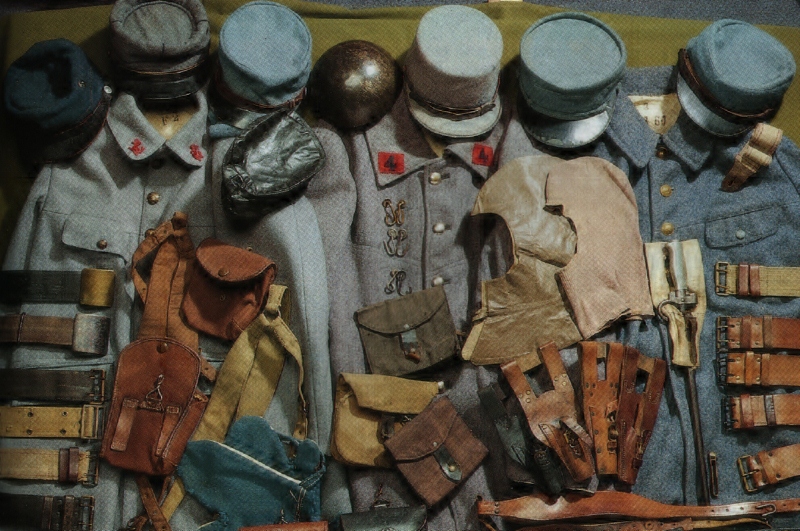
Four examples of greatcoats demonstrating the variation in shades of cloth used in the early uniforms. From left to right: M14 2nd Type in light blue; M14 1st Type in English dark blue-gray; M14 3rd Type in (dark) light blue.
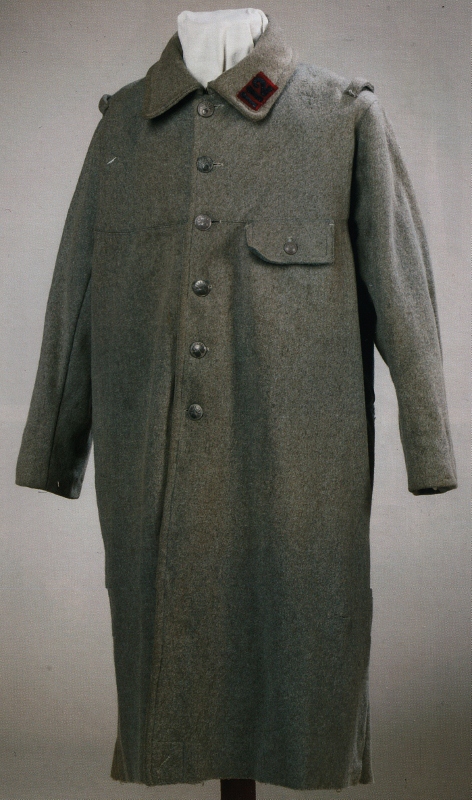

On left, M14 2nd Type greatcoat in light blue (112 R.I.); on right, M14 2nd Type greatcoat in English dark blue-gray (69 B.C.P.).
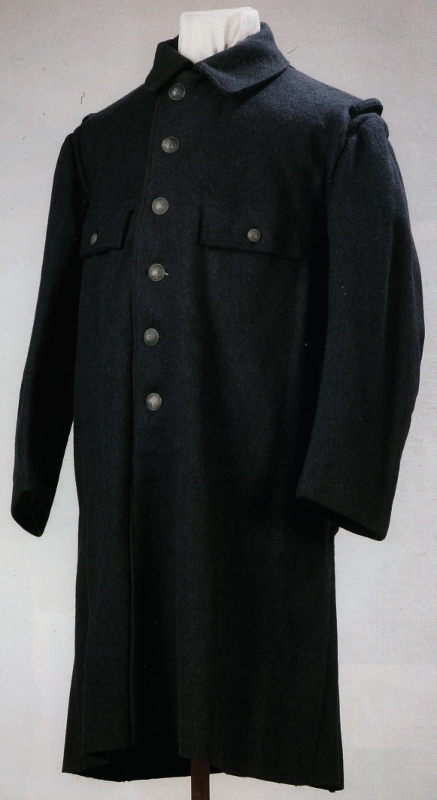
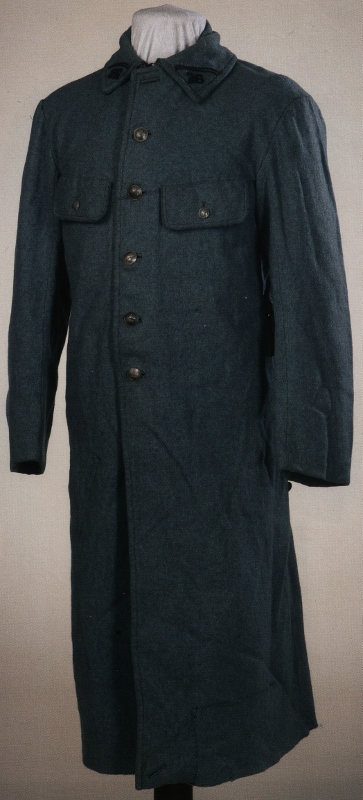
On left, M14 3rd Type greatcoat in English dark blue-gray (this example was not issued); on right, M14 3rd Type greatcoat in light blue (26 R.I.).
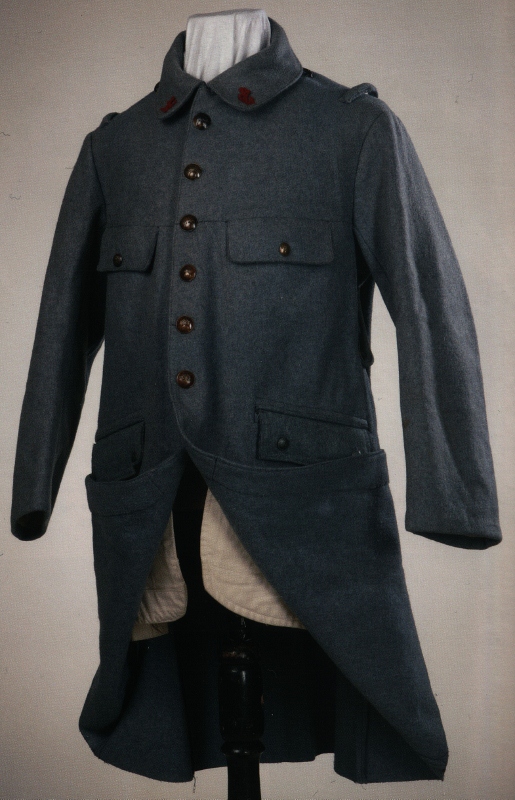
On left, M14 4th Type greatcoat in light blue (unidentified Colonial regiment); on right, M14 private purchase jacket in light blue (60 R.I.).
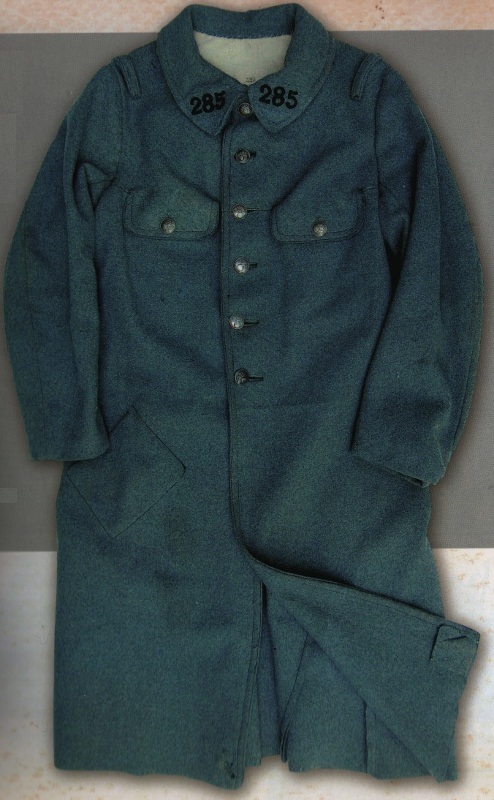.jpg?dl=0)
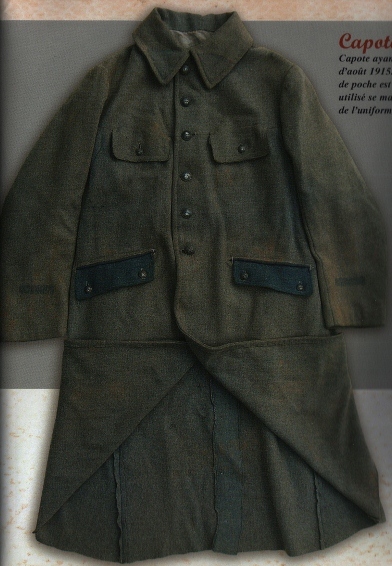.jpg?dl=0)
On left, M14 3rd Type greatcoat in light blue (285 R.I.); on right, M14 4th Type in light blue (note the original coloration on sleeves where rank stripes were present).
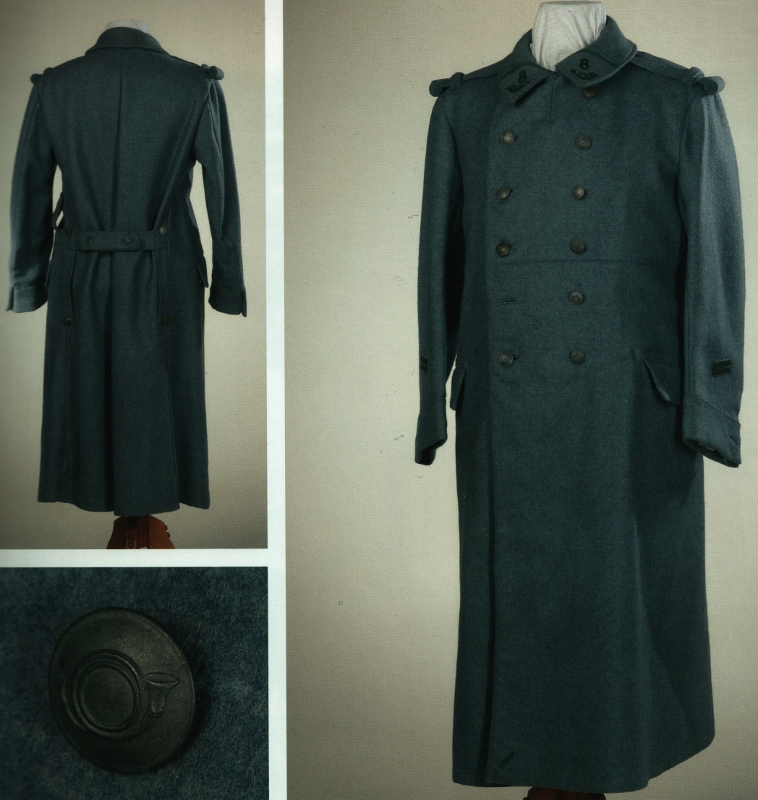
M15 greatcoat in horizon-blue (8 B.C.P.).
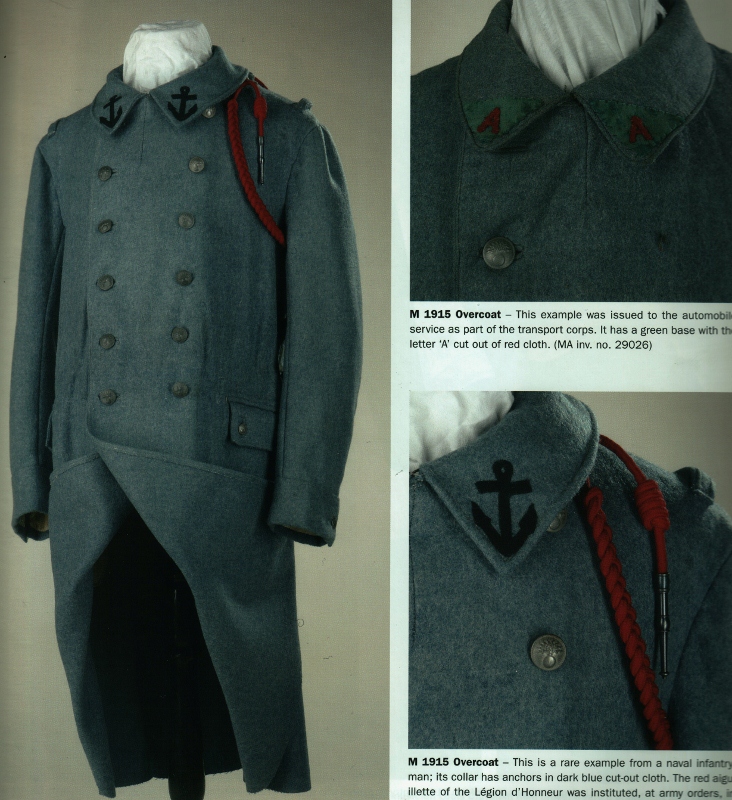
M15 greatcoat in horizon-blue (unidentified naval infantry regiment).
.jpg?dl=0)
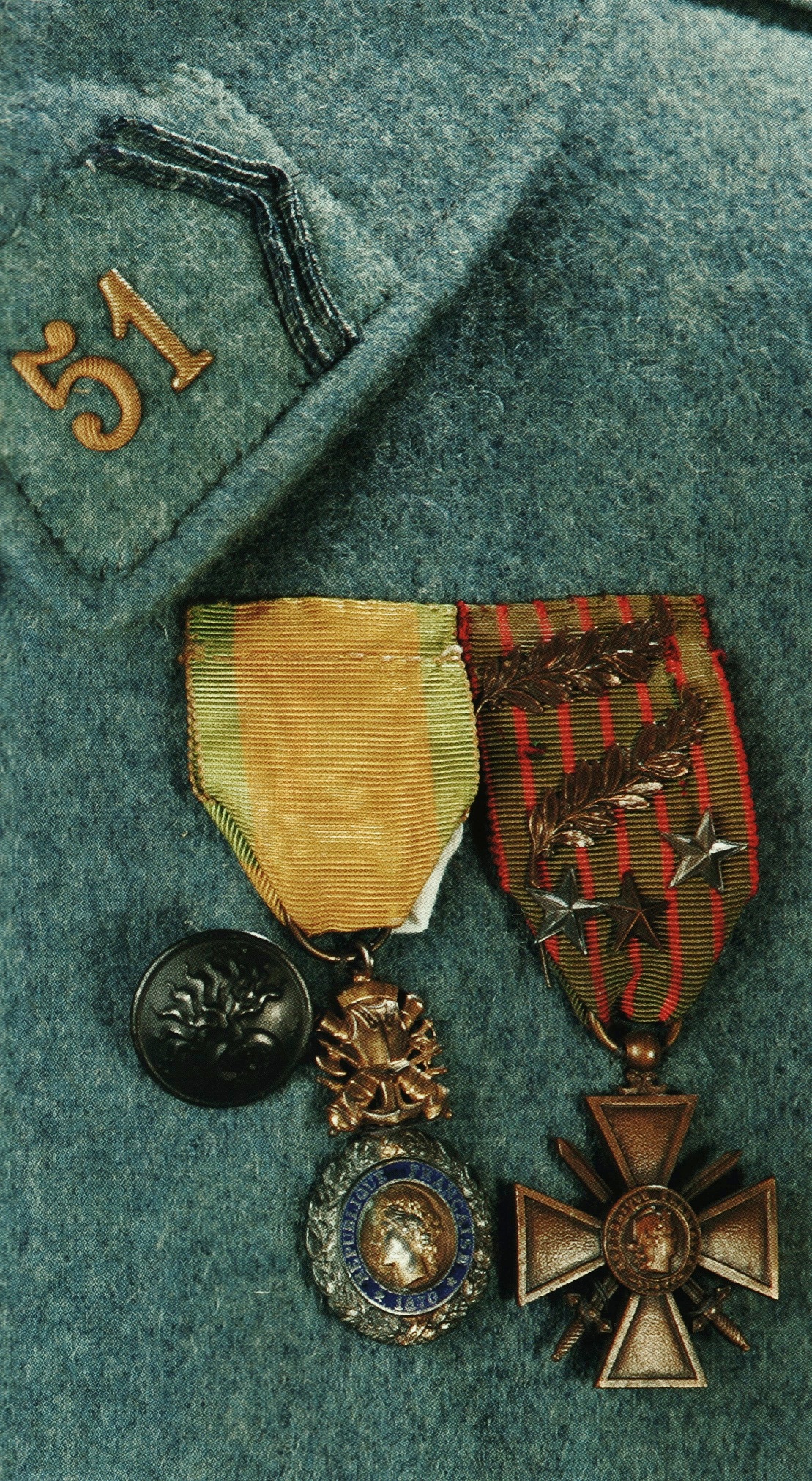
On left, M14 jacket in horizon-blue; on right, M15 greatcoat in horizon-blue.





